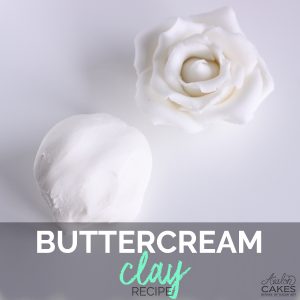The Buttercream Clay tutorial went live, and had a great amount of excitement and feedback from all of you! However, I found that a lot of members could not get their hands on the product we were using for the Buttercream Clay tutorial. So over a couple of weeks I experimented with everything under the sun trying to reproduce something very similar. I also wanted you to be able to make it using ingredients you probably already had in your kitchen! So here are a few key points that I needed to hit:
So after trying all sorts of recipes: shortening, powdered sugar, glycerin, corn syrup, etc. I would make them, they'd seem OK at first, but eventually crystallize and turn into a crumbly hard mess. I soon realized I needed an emulsifier of some sort. I thought about ordering some exotic additives, but I thought that wasn't going to work for most of us at home.
THEN, for some other reasons, I added TYLOSE to one of the recipes. Originally I wanted to see if it would thicken the feel of the mixture. I let it sit out just like the others. However, when I came back to all the experiments, most crumbling from crystallization, there was one that was standing tall, proud and still completely malleable! You guessed it, the one with Tylose! I went back to research Tylose (or CMC, aka Carboxymethyl cellulose)'s properties... it is also used at an EMULSIFIER! BOOM! I found my secret weapon! Since then, I have left it out for a WEEK straight, still no crystallization! *join me in the happy dance*
So now that you know about the journey to this recipe, here it is yours to enjoy!
Note: This is not identical to the product we feature in the tutorial, it is very similar. The orignial product is a little more "waxy" and a little thicker in consistency. If you are going to be doing a lot of buttercream clay work, you may want to eventually give the original product a go... however I think this recipe is a great replacement!
